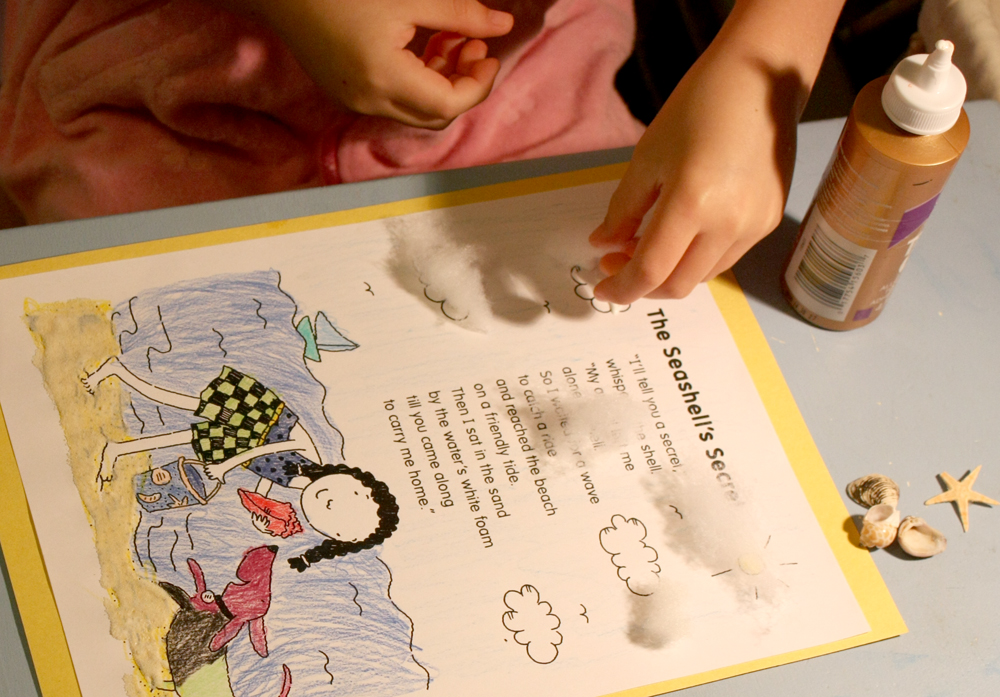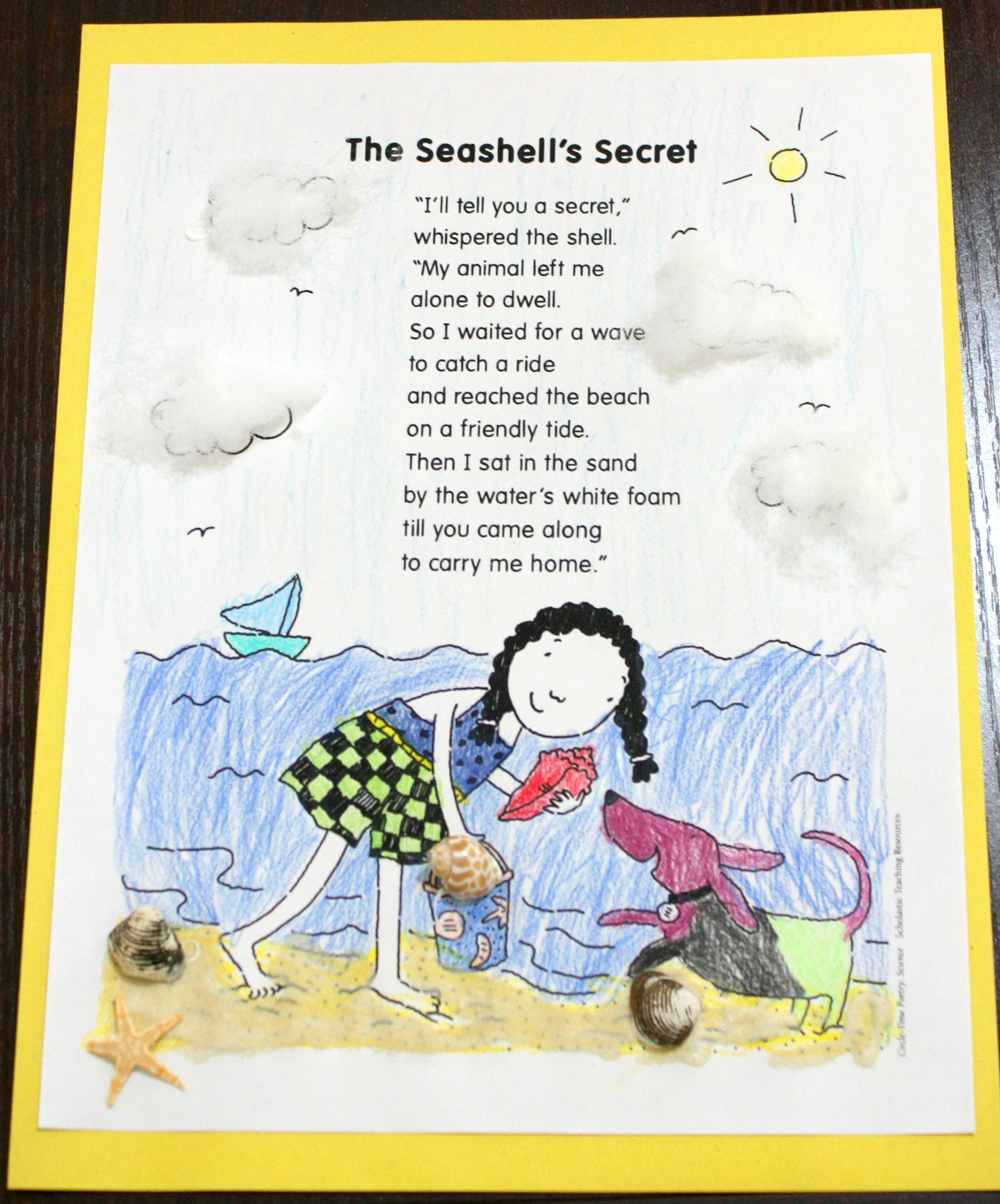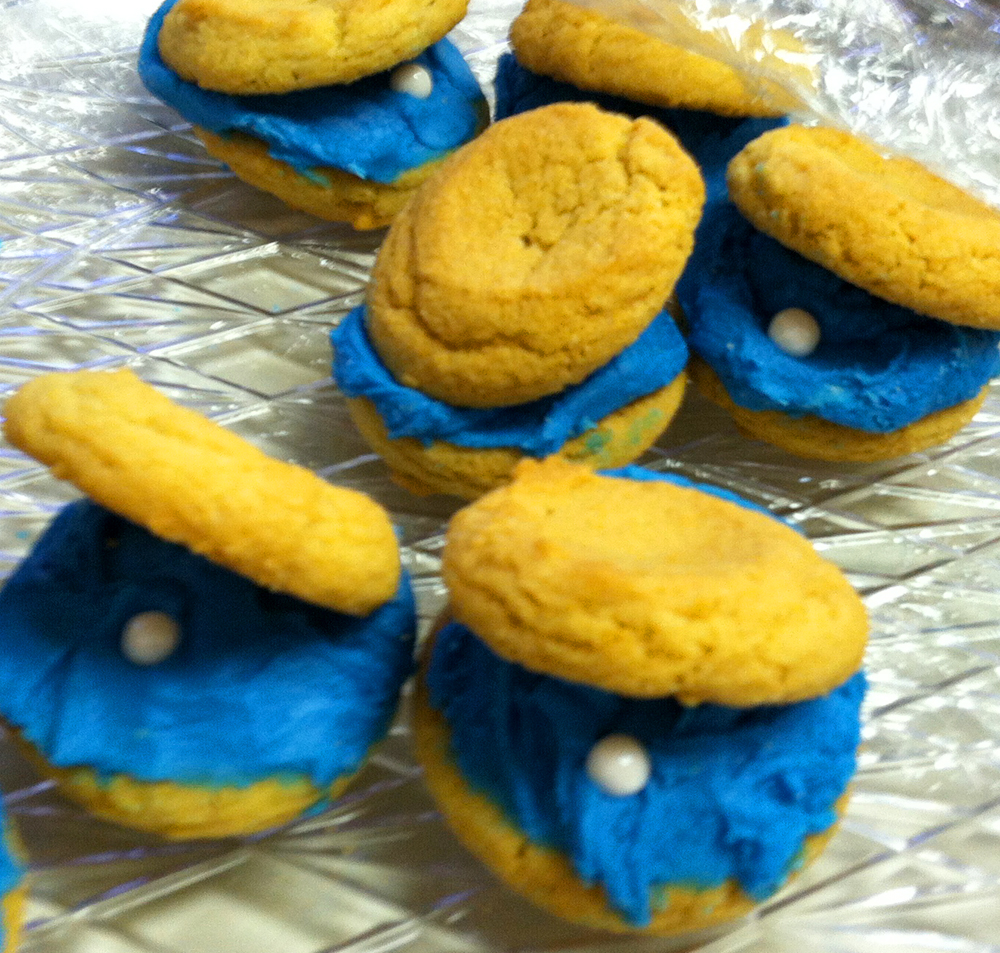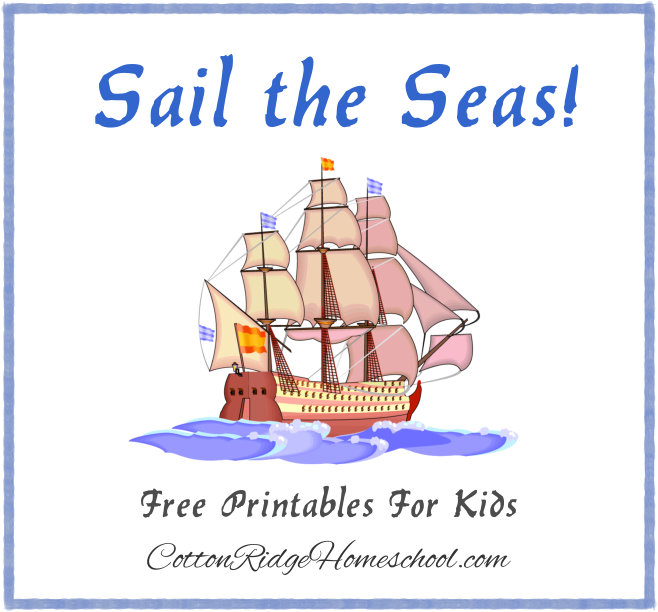Introduction to Zoology for Early Elementary Students ~ Week 3: Fish & Mollusks

This post is part of the Introduction to Zoology series. For a suggested class schedule, an overview of the entire course, and links to more lesson plans, please see the Introductory Post.
In this lesson you will teach your students about Fish and Mollusks.
Disclosure: I was not compensated for this post. I am an affiliate of Amazon, and will receive a small commission if a link on this page is used to make a purchase.
Week 3 Lesson Plan
Note: The following schedule is for a 2-hour class. We also allowed time each week for Show-and-Tell, which is not included below.
1. Introduction & Map Activity (Floor: 5 Minutes)
Place images of fish on the water areas of the map.
In my lessons I used the Discovery Kids Fabric Activity Map pictured at the right. I split the felt land mass, water body, and animal pieces into 12 different baggies, one for each lesson. Each week I distributed the felt pieces among my students and allowed them to place them on the map, using a picture of the completed map as a guide.
Alternate Map Idea
The Discovery Kids map appears to be discontinued, so instead, you can use a regular wall map or globe. Cut out small pictures of the animals you are going to learn about from magazines or old encyclopedias. During each lesson attach them to the appropriate area on the map or globe with removable poster putty.
2. Poetry (Floor: 5 Minutes)
The Llama Who Had No Pajama: Fish (page 56).
Circle-Time Poetry: Science: The Seashell’s Secret (page 40).
3. Animal Encyclopedia (Floor: 5 – 10 Minutes)

- “What is the most interesting thing you remember?”
- “Have you ever looked for shells on a beach?”
- “Did you know that animals used to live in shells?”
- “What differences do you notice between fish and mollusks? What similarities?”
I mostly used DK First Animal Encyclopedia, and occasionally Usborne Children’s Encyclopedia of Animals for my lessons.
4. Activity Idea 1: The Seashell’s Secret (Table: 15 – 20 Minutes)
You will need:
- A copy of The Seashell’s Secret from Circle-Time Poetry: Science (page 40) for each student.
- Crayons or Colored Pencils
- 9″x12″ Construction Paper
- Glue Sticks and White Glue
- Natural Color Craft Sand, Clean Sandbox Sand or Clean Beach Sand
- Small Seashells
- Cotton Balls
- Paper Plates

Have your students color the poetry page, then glue the page on a piece of construction paper. Help them glue on some real sand to the sand in the picture: use your finger or popsicle stick to spread glue, pour on a little sand on the paper over a paper plate, then shake off excess sand onto the paper plate.
Pass out small seashells to glue onto the sand, and cotton balls to glue onto the clouds.

Activity Idea 2: A Fish’s Gills (Table: 10 – 15 Minutes)
You will need:
- A copy of A Fish’s Gills from Hands-On Minds-On Science: Animals (page 41)
- Crayons or Colored Pencils
- Child-safe scissors
Follow instructions in book.
5. Zoology Notebook (Table: 10 – 15 Minutes)
Pass out binders and crayons, markers and/or colored pencils. Have your students color the Underwater Scene Coloring Page (an education.com download). You can assemble the Animal Science Notebooks before the school year begins if you wish: click here for blog post with free instructions and list of printables.
6. Snack (Table: 10 – 15 Minutes)
Goldfish Crackers (of course) and/or Clamshell Cookies. My teaching partner brought in these cookies and the kids loved them! Be sure to check with your students’ parents/caretakers for any food allergies ahead of time.

Clamshell Cookies
- Small Round Sugar Cookies
- White or Blue Frosting (my teaching partner said the blue reminded her of the sea)
- Edible white pearls such as Pearl White Candy Beads
Frost the bottoms of half of the cookies, thick enough so that the top cookie will stand up at an angle (refer to picture). Add the pearl, then the second cookie.
For more animal-themed snack ideas, please visit my Science For Kids – Snacks Pinterest board.
7. Story (Floor or Table: 5 – 10 Minutes)
The Rainbow Fish by Marcus Pfister and/or Very Last First Time by Jan Andrews (this story is about a girl who learns to collect mussels (Mollusk class) in northern Canada.
8. Craft Project Idea 1: Fish Collage Posters (Table: 15 – 20 Minutes)
Supplies Needed:
This is a great project to help illustrate the astounding variety of fish in the world!
- Pictures of all kinds of fish, cut out from magazines and old books. Alternatively, you can print out fish coloring pages for the students to color and cut out.
- Glue Sticks and Scissors
- Construction Paper – one for each child, OR one very large piece of poster board
Individual Project: Pass out construction paper, pictures of fish, glue sticks, and scissors. Instruct students to make a collage on the construction paper, gluing on pictures of fish, overlapping them, until the whole paper is covered. (you may need a sample to show them). Then, hang their work on the classroom wall!
Class Project: Have students gather around one very large piece of poster board. Pass out pictures of fish, glue sticks, and scissors. Instruct students to make a collage on the poster board, gluing on pictures of fish, overlapping them, until the whole paper is covered. Then, hang their work on the classroom wall!
Craft Project Idea 2: Under the Sea Diorama (if you didn’t make one last week)
Click here to go to my blog post with instructions and more pictures for an Ocean Diorama (scroll down toward the bottom of the post).

Also, see my Science For Kids – Life Science Pinterest board and Sail the Seas Printables post for more ideas!
Please feel free to comment below with your recommendations – I appreciate your ideas and suggestions!
Copyright 2016 Kathryn Depew
Disclosure: I was not compensated for this post. I am an affiliate of Amazon, and will receive a small commission if a link on this page is used to make a purchase.



Leave a Reply